Risky Play
Risky play – a concept that can be hard to truly understand and appreciate.
Some of my fondest memories from my childhood include running around the local park with my friends, left unsupervised until the street lights came on. Climbing rock walls, riding down steep hills on my bike and swimming in the local dam. Taking these risks gave me the opportunity to not only know but understand safe from unsafe in my adult life.
As a care giver in whatever form that comes, it is often a natural instinct to protect children from any harm. Wrap them up in cotton wool so to speak and keep them hidden from the pain and suffering in the world. But what are we really protecting them from? Risk? Almost everything we do has risk. Jumping in your car to drive to work – risk. Crossing the road – risk. Snoozing your alarm just once more – huge risk!
When we give our children the time, space and resources to engage in risky play, we are gifting them so much. Yes, they might come home with a graze on their knee, an extra bump or bruise that they didn’t have before – but they are also coming home with new found confidence in themselves and the world around them. They gain increasing understanding of their body, what it is capable of and what their limits are. They learn resilience and persistence, action to consequence and problem solving skills.
Luckily for us, children are designed to learn from falling down. As teacher Tom has said in his blog The right number of owies. “If you have no bloody owies, you are being too careful. If you have three or more, you are not being careful enough.”
When I reflect on my own experiences supervising risky play I am reminded that I need to be a little more careful of my ‘be careful.’
When we make comments like this, we are actually filling the child’s head with our own anxieties. Children trust us as the adults to know what we are doing and saying. If you tell a child to be careful you are suggesting that they are unsafe and will get hurt and in reality most of the time, this isn’t the case.
Yesterday I was supervising some risky play that involved children riding on tractors down a plank that was leaning off a rock retaining wall. Phew, this was a bit hard. With so many rocks and other hazards around, I very nearly destroyed the children’s learning by ending the experience. Instead, I looked around, how can I make this safer? I asked the children that exact question. I was left with “go slow” and “move the rocks.” So together we talked about what to do. We decided on a crash mat on either side of the ground and we discussed how if they started driving ¼ of the way down the plank, if they did fall off the side, they would not hit the large rock wall. The children and I were both happy and comfortable with that and they continued on with their experience. Yes, they tumbled a few times but they learnt so much about balance, coordination and how to identity hazards to keep themselves safe.

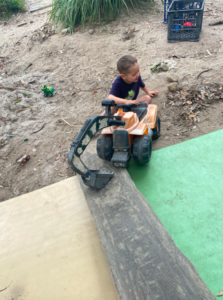
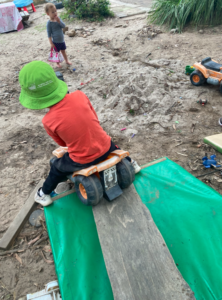
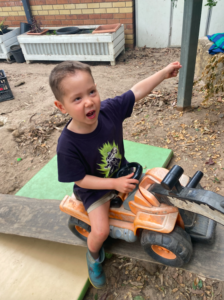
As much as we might hate to think about it, one day these little people will grow up and head into the big wide world. They will experience pain and suffering – it is an inevitable part of being human and what makes life so precious. All we can do as caregivers, is provide children with the time, space and a safe environment to engage in risky play.
In doing this, we give children the opportunity to develop the skills associated with managing risk and encouraging them to be emotionally grounded.
What about when things don’t go to plan? That’s when we get to step in and give all those squishy cuddles, kiss owies better and remind the children we will always be there, cheering them on and keeping them safe.
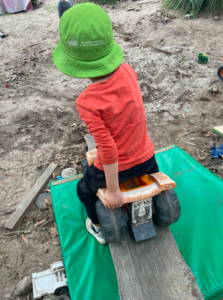

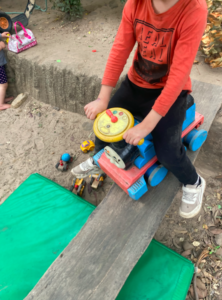
Written by Jessica McGrath ~ Eskay Kids Springfield

